Please read the first part here.
Realize capabilities
Now you can define which managed services you will use. Therefore, you have a pretty good understanding of how the right combination of private and public clouds would look for you. In order to build a plan, first, we analyze our abilities and AS-IS state.
I would recommend performing the assessment of your organization’s maturity.
Operation maturity analysis will help understand what your organization is capable/incapable of. Understanding the gaps is very important because quite often it is better to stop cloud adoption and fix operational problems. Cloud is new transportation that will allow you to drive much faster. And if you don’t know how to drive and have terrible eyesight, then it will only get you into trouble.
And I know how boring it is to read so many letters. So, I’ll use more pictures, bear with me ;).
I recommend using the Gartner IT maturity model like below.
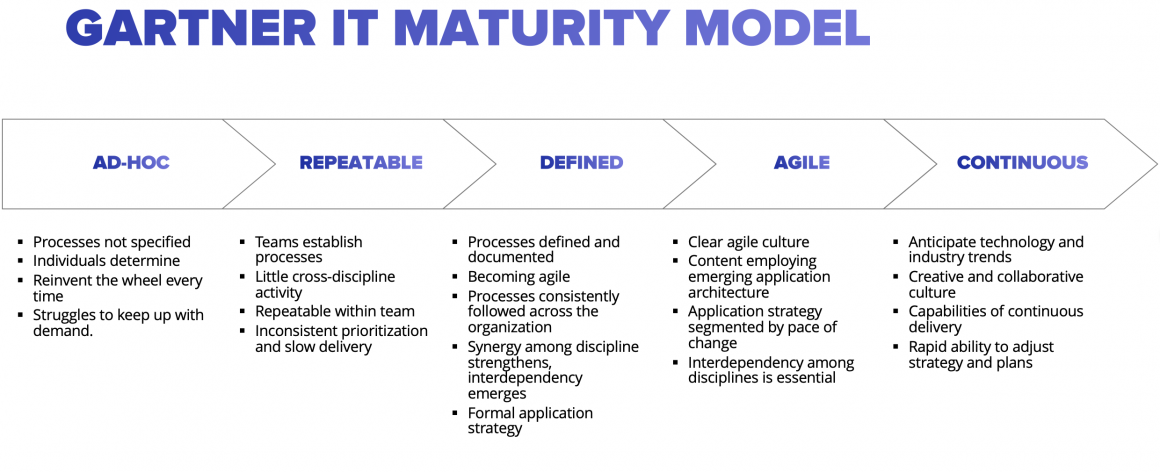
Or you can use a combination of TOGAF Capability Increments and CMMI Capability Maturity Model.
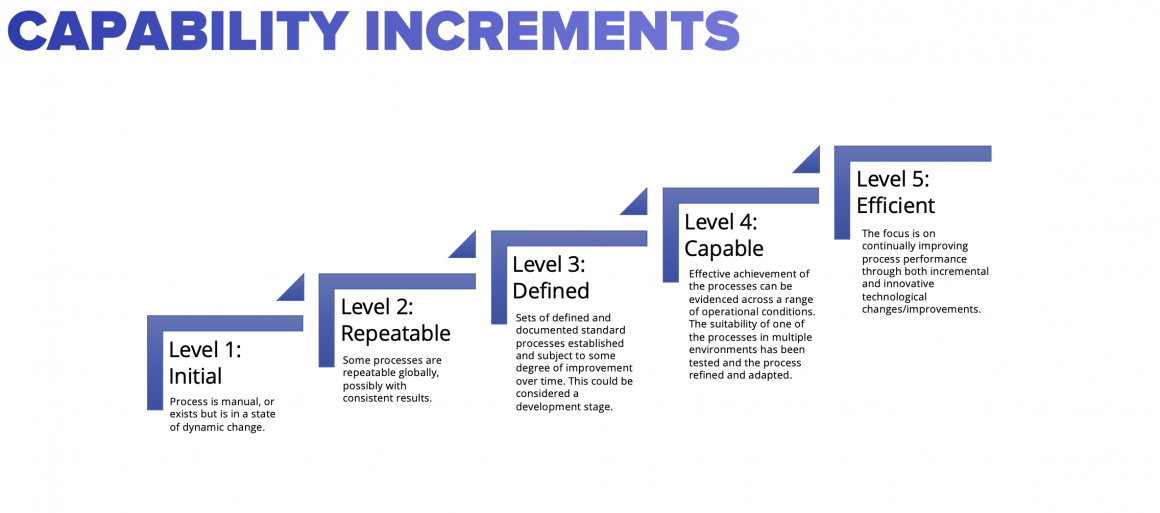
Analyse all aspects
Core aspects to consider in order to define your level could be as below:
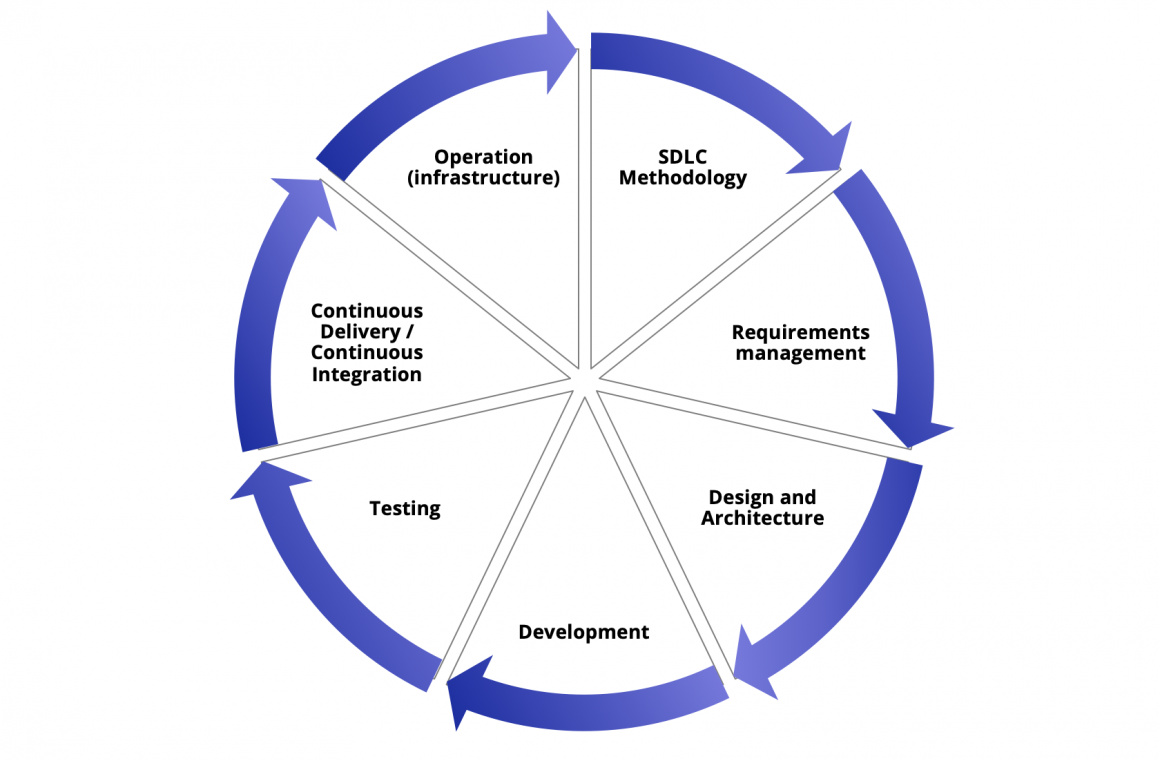
6R strategies
After the assessment, you can divide all your assets (applications mostly) into 6 buckets, as per the chart below. This will make your strategy specific and detailed enough so you can plan the Work Breakdown.
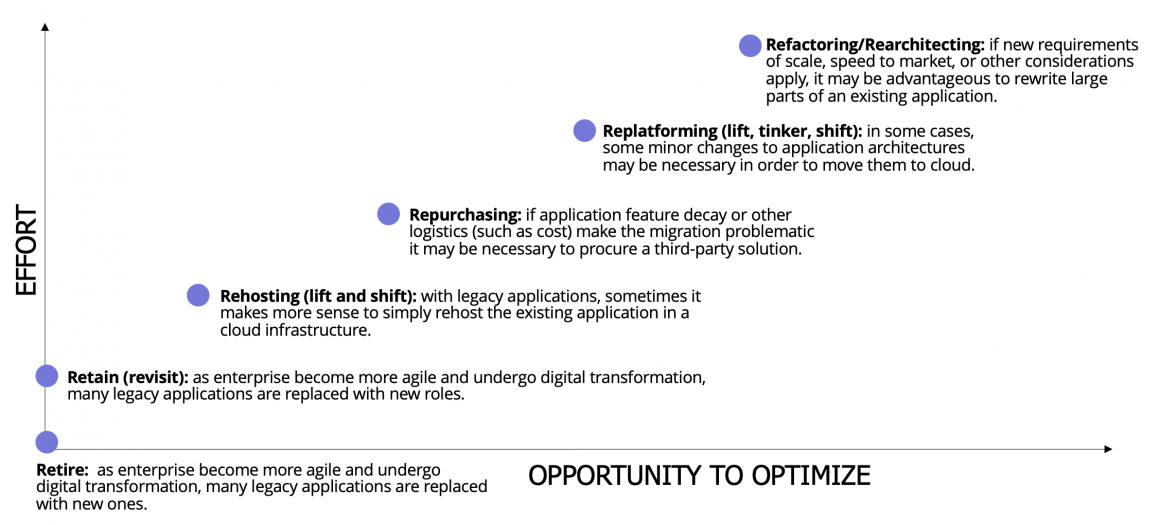
Teams and their involvement
And last but not least make sure you have all the necessary teams in place.

Now you know where you are and how tough the journey will be. You also know if you have the right people in place. It’s time to plan the Roadmap.
Cloud adoption steps
In general, the cloud migration roadmap should consist of 6 steps (see chart below). This is an iterative process so some of these 6 steps could be repeated multiple times.

The Roadmap above describes what we usually do at each stage. But also, we have to consider what usually happens. There are things that each company most likely will face. Like for example the Jevons paradox: as soon as resources become cheaper and easier to get, people actually spend more buying these resources. This might not make a lot sense as it sounds, but it’s true. When we talk about the private cloud, it takes weeks to increase capacity. In the private cloud, people will be able to spin groups of VMs within hours or even minutes. This results in tons of computing resources generated “in rush”, “to test” and “just in case”. It seems so easy and cheap!
Enough words! Below please see the typical Cloud Transformation Journey that a company most likely will face.
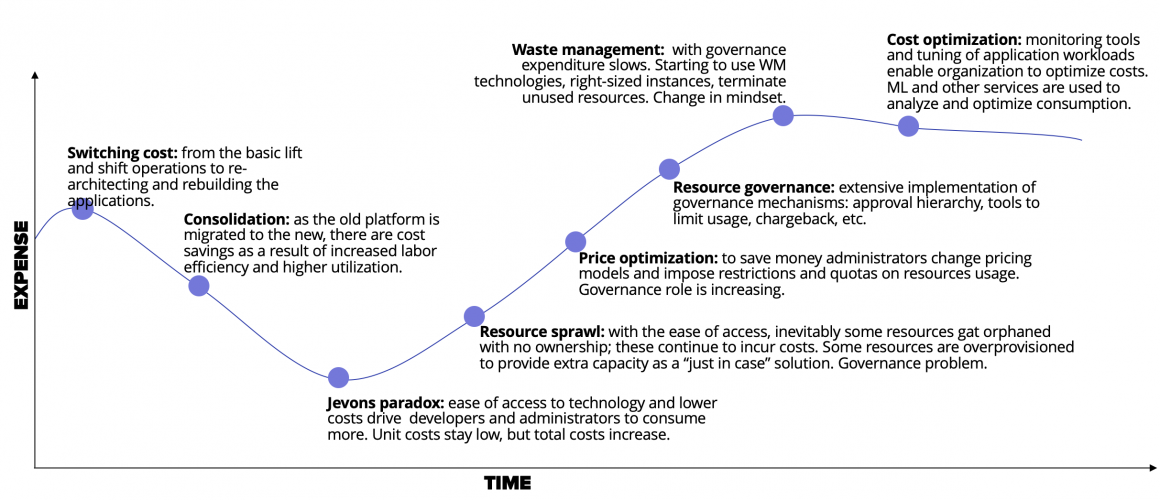
Now you have everything you need to define your Cloud Strategy and plan its execution.
The next Articles will cover a comparison of major cloud providers, how to organize and manage Cloud Team, and others. Stay tuned!


